By Molly Monahan, AmeriCorps Food Educator
How does the fall season make you feel?
Perhaps you experience the back to school feels, whether begrudging or exhilarating. Certainly the pumpkin spice latte brigade rises to the occasion in full force, as does the spooky season society and the sweater weather clan. In the rare moments when we mindfully experience our senses of sight and touch, we may even delight in the fiery sunset that splays across the foliage of many of the trees here in Bellingham (an energy-saving adaptation, as our 3rd graders have just learned!) or revel in the crisp caress of the early morning autumn air. And perhaps, just perhaps, this chill in the fall air goes beyond skin deep…
As the days grow shorter and darkness becomes the dominant force in our days, maybe you feel a strange presence in the silence. As the deciduous trees drop their leaves and stand stark and naked, you may be reminded that death waits for us all. And you would not be alone. Across a stunning multiplicity of countries and cultures, the global population has unanimously intuited that this season, that is to say, Late August, September, and October, is the time of year when the veil between worlds is at its thinnest. More than any other time of year, these months are thick with spirits, benevolent ancestors and malevolent ghouls alike. This stunning cohesiveness is exemplified by the countless festivals and events that are held around the globe in these few months celebrating ancestors and ghosts. But the similarity doesn’t stop there – these celebrations of the dead are also celebrations of harvest, the abundance of food and nature. China, Mexico, Nepal, Korea, Tamil South Asia, West Africa, Japan, Cambodia and Druid Celtic Ireland and Scotland – people in all of these countries (and many many more!) saw some connection between the joy of harvesting their fields and honoring their departed ancestors. Why might these two things be honored in conjunction, always, across time and space? Perhaps it is mere seasonal coincidence that we harvest during the fall, and the natural death all around us recalls the passing of loved ones to our minds. Traditional Chinese Medicine cites autumn as the season of the metal element, embodying grief, refinement, and letting go. (Here is a link to one of my favorite Qi Gong practices – the metal element practice may be particularly useful this season.) Like the trees and their leaves, fall calls us to let go of our tension, grief, and pain – and yet, we remember. I like to think that throughout human history, harvest has been a time for rituals of gratitude to the earth for giving, and what is death but the earth taking back what it has given? This giving and taking back are like a wave crashing on the shore, then receding back to sea; it is all one whole action, an action that forever repeats itself. Woven through this unbroken circle is the thread of gratitude. At least that’s my theory!
So, in the spirit of curiosity and loving this world that gives and takes, I propose a whirlwind tour of the various festivals around the world that celebrate ancestors, spirits, and a bountiful harvest. Here we go!
Disclaimer: My ancestry is primarily Irish, and my authority to speak on these festivals is next to none. I have cited my sources and come from a place of cultural humility and great interest in learning about and honoring these cultures and traditions, and want to highlight that you would learn much more about the detail and meaning of these celebrations from a person who has grown up practicing them! Also, this is NOT an exhaustive list – Visit this Smithsonian article for even more festivals! (And there are many more beyond this article too!) Okay, now here we go!
Dia de los Muertos: November 1-2

If you don’t already participate in Dia de los Muertos festivities, consider building your own ofrenda this year and making an intentional space to honor and care for your ancestors.
This beautiful festival celebrates loved ones who have passed on by honoring them with memory. Historically, it is a blending of a Mexica (Aztec) homage to ancestors and the lady of the dead, Mictlancíhuatl, and the Spanish colonial holiday of All Souls Day. Ofrendas are altars bedecked with pictures of loved ones, their favorite foods and drinks, candles, and marigold flowers. Marigold, or Flor de Muerto (Flower of the Dead) in Spanish, creates pathways that guide the spirits of the dead to the ofrendas with their gorgeous colors and aroma. They also symbolize the ephemerality of life, much like the symbol of the cherry blossom in Japan. During this time, cemeteries and homes are lit up with light and life, delicious foods, music, and memories as families decorate the graves of loved ones in a stunning display of care and remembrance. You may also see a lot of calaveras, or skulls, either made of sugar, painted on faces, or displayed in artwork.
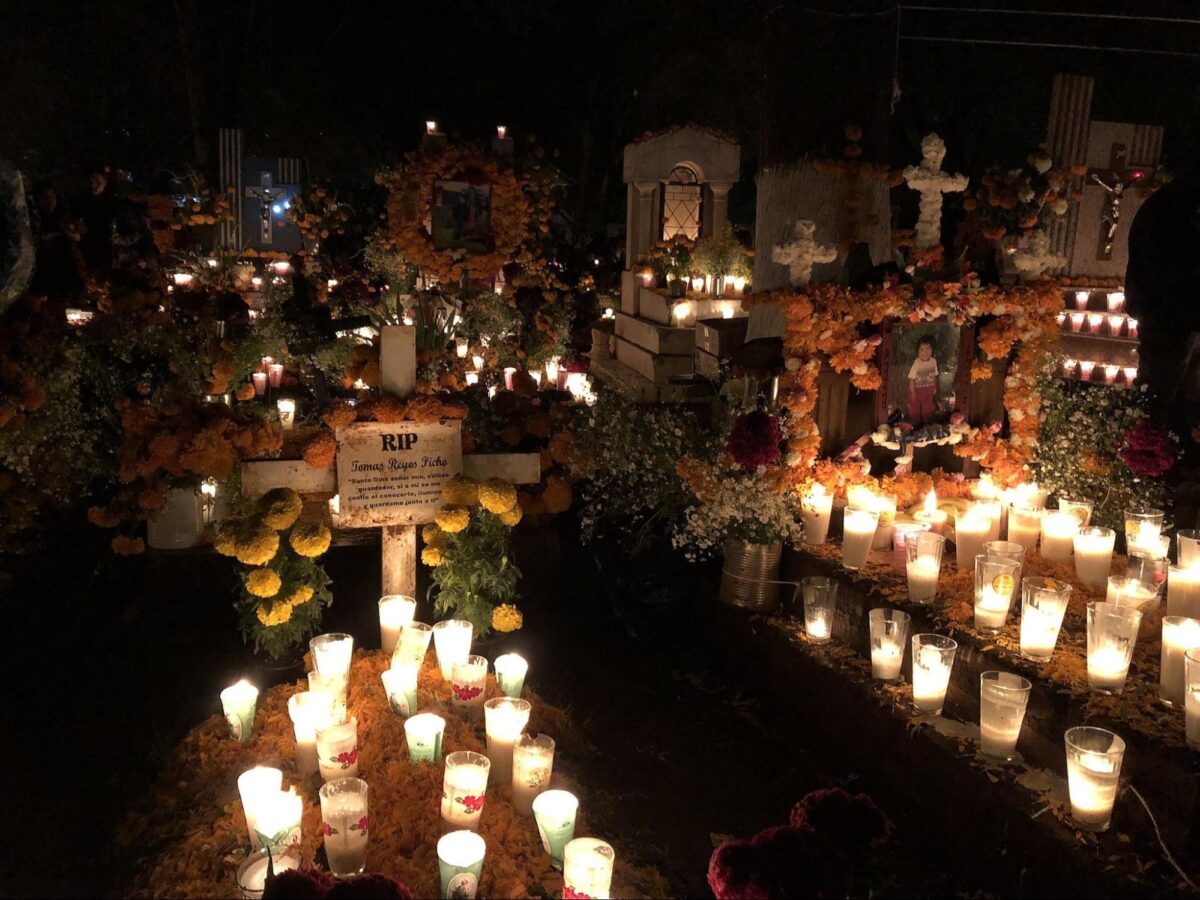
Samhain: October 31 – November 1
Resist the urge to pronounce this “sam-hane”, for it is a Gaelic word pronounced “saw-win”. The pagan ancestor of Halloween, this Druid celebration welcomes a bountiful harvest and ushers in the darker half of the year. Celts observed that this was the time when the barriers between the physical and spiritual world broke down, and not all of the spirits involved were so trustworthy and kind. Community bonfires, called samghnagans, burn brightly to keep monsters and faeries at bay, and jack-o-lanterns are actually descended from carved turnips that held similar fires. Indeed, Samhain was a time to protect yourself from a host of mythical creatures such as the shape-shifting pukah, the headless pursuant Lady Gwyn, horses with flames in their eyes, and the sluagh, groups of faeries who kidnapped people and stole their souls. But not all spirit visitors were so scary – the “Dumb Supper” (?!?!) was a meal in which families invited the souls of their ancestors to eat with them, updating them on news from the past year, singing to them, and offering them cakes. The Halloween tradition of trick-or-treating, brought to America by Irish immigrants, comes from the practice of mumming, in which children would dress up in costumes and go door to door singing songs for the dead, receiving cakes as payment.
Perhaps this Halloween season you may feel compelled to take a deep dive into ancient Celtic ghouls, ghosts, and faeries, or light a protective fire and sing to your departed loved ones.
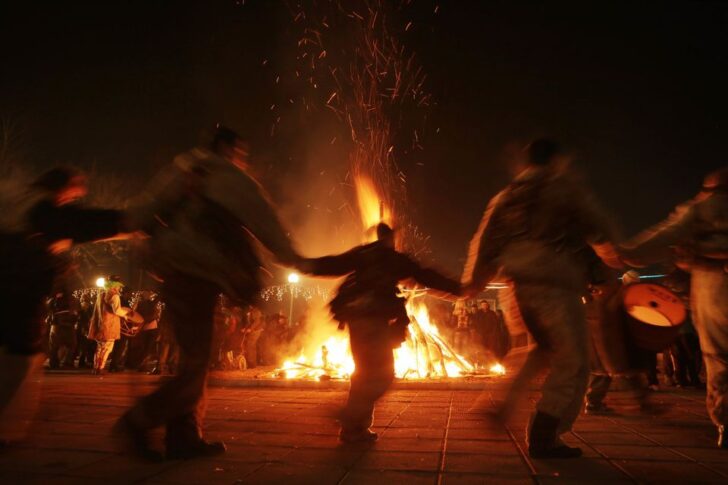
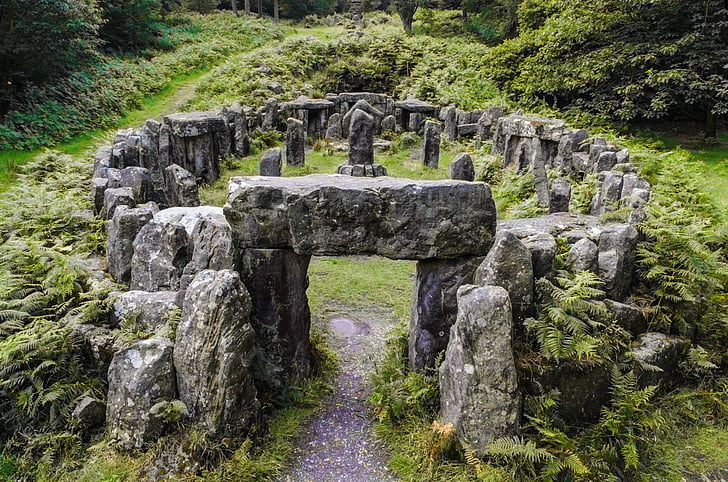
Chuseok (추석): 15th day of the 8th month of the Lunar calendar,
somewhere in September-October
Chuseok, literally “autumn evening” and sometimes referred to as Korean Thanksgiving, is a three day period where Koreans travel back home to be with families, honor ancestors, and give thanks for a fruitful harvest. A member of the family of Asian mid-autumn Lunar festivals, this celebration can be traced back 2,000 years to the ancient Silla Kingdom. A common practice during Chuseok is Charye (차례), or ancestor memorial services, which are completed in the home and involve offerings of food, wine, and formal bowing in front of ancestral tablets and photographs. A much-loved food that is popular during this time is Songpyeon (송편), colorful steamed rice cakes filled with sesame seeds, beans, chestnuts, and many other delicious fall foods. Ganggangsullae (강강술래) is a traditional dance done under the full moon as a prayer for a bountiful harvest (I googled a video of this and was not disappointed!) Chuseok presents an all-too-rare opportunity to visit one’s home and family, honor and thank your ancestors, make a wish on the full moon, and relax into a more restful, abundant season.
In the spirit of Chuseok, take some time to visit family and friends that you may not have seen in a while, and share some delicious seasonal food together. Find a grateful intention to your ancestors for all that they did to give you this life, and to the abundant earth for everything it provides to us.
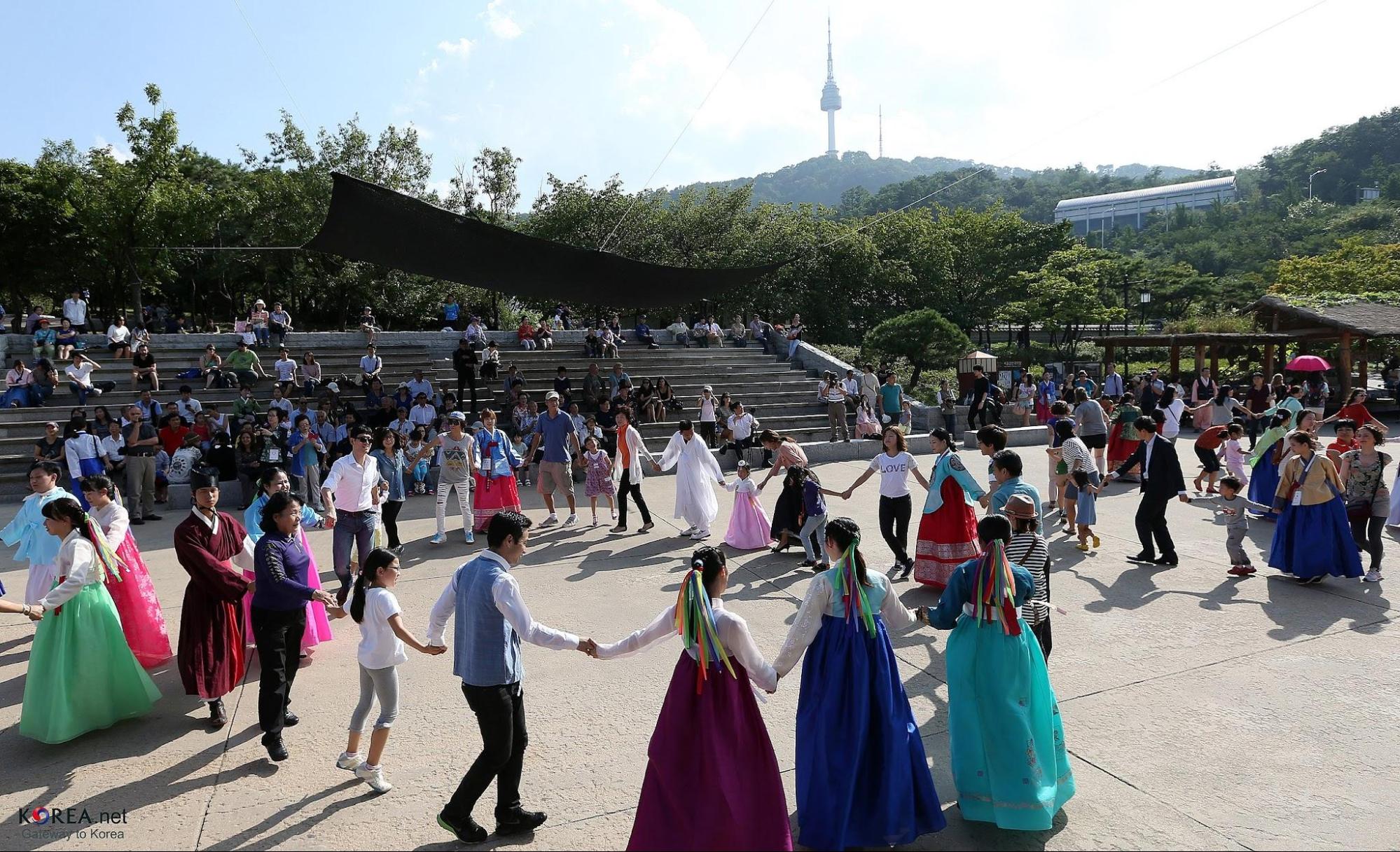
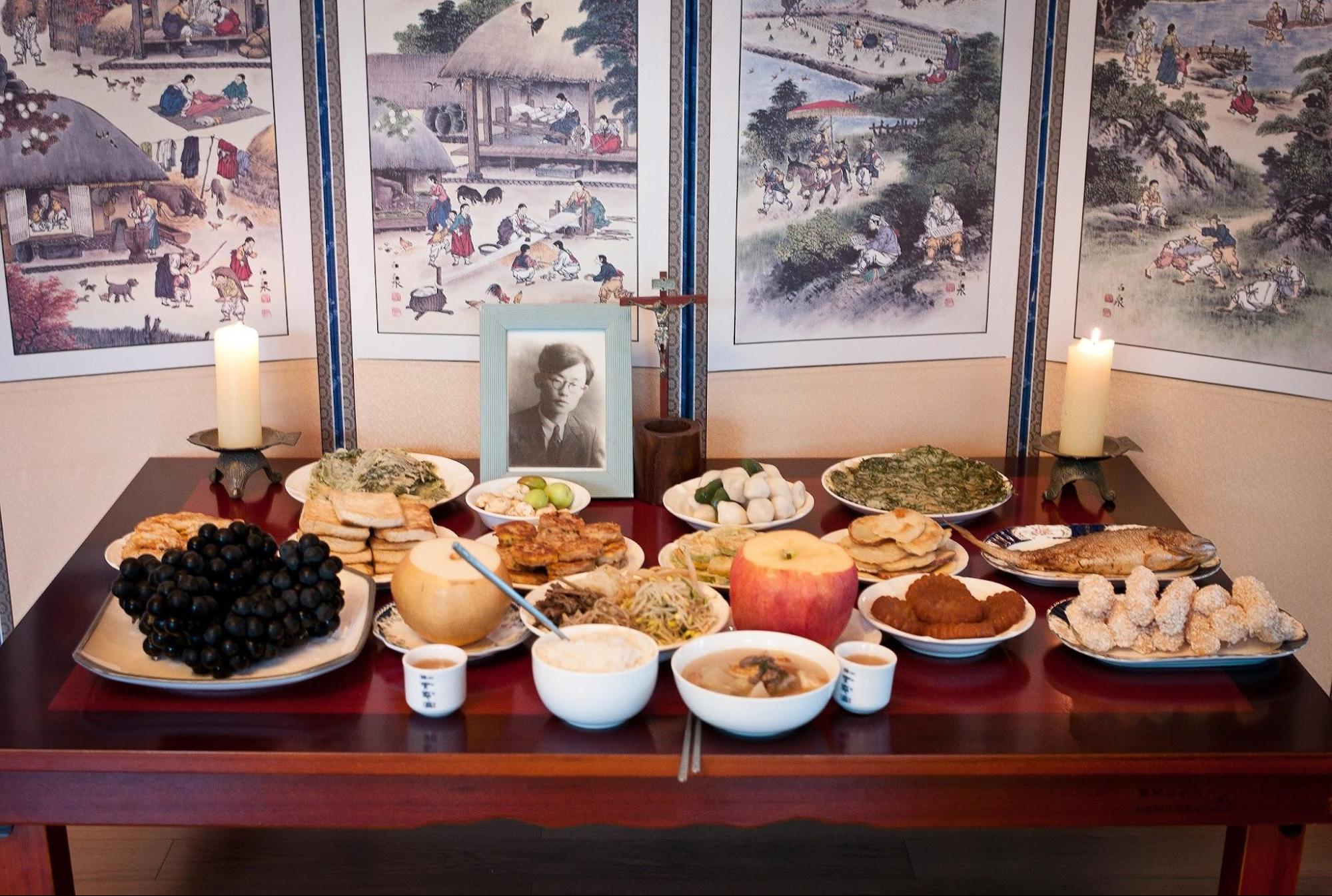
West African Yam Festivals: August – September
This is not a single festival, but a vibrant collection of celebrations that span the countries of Ghana, Benin, Republic of Côte d’Ivoire, Togo, Nigeria, and Cameroon, otherwise known as the Yam Belt of Africa which boasts a stunning 90% of global yam production. Within these countries reside scores of different ethnic groups, each with distinctive languages, foods, religions, and cultural practices. The common thread (no pun intended) that unites this grand diversity is the yam, which in Africa has long been a symbol of fertility and masculinity, giving it potent symbolic power in the realm of gender, identity, and marriage. In late summer or early fall, as the rainy season peters out and crops lay ripe for harvesting, yam festivals erupt across West Africa, full of chanting and singing, dancing, drumming, and costumed processions. Gratitude for a bountiful harvest is offered both to ancestors and gods, which vary by culture and geography. Practitioners of these festivals state that they are vital moments of community solidarity and joy. Second only to cassava, the yam is an extraordinary staple food in Africa, but concerns have risen about decreased yield due to depleted soil health and climate change, increasing food insecurity in one of the most challenged areas of the world.
In the spirit of the yam festival, dance, sing, enjoy a taste of this nutrient-rich food, and revel in joy with your community, and also consider what you can do to protect soil health, support climate resiliency, and fight food insecurity wherever you can.


Obon: August 13-16
During the Japanese Buddhist festival of Obon, people travel home to be with family and receive the spirits of ancestors who have made a journey from the afterlife to visit for a few short days. During this time, families will tidy up and leave offerings at ancestor’s graves and ancestral shrines within the home called Butsudan (仏壇). To help the spirits find their way home, welcoming fires called Mukaebi (迎え火) and lanterns called Chochin (提灯) are kept burning to signal welcome, and a few days later similar farewell fires called Okuribi (送り火) are lit to wish the ancestors a safe journey back. Shoryo-uma (精霊馬) are animal-shaped objects created by inserting toothpick legs into oblong veggies like cucumbers and eggplants, emulating horse-like creatures that will swiftly carry the dead towards the home. Bon Odori (盆踊り) are traditional dances that are performed during vibrant, carnival-like community festivals of song, dance, and food.
In the spirit of Obon, bring a little light into your life with a fire or paper lantern lit in honor of your loved ones and make a shoryo-uma with a person and vegetable that you love.
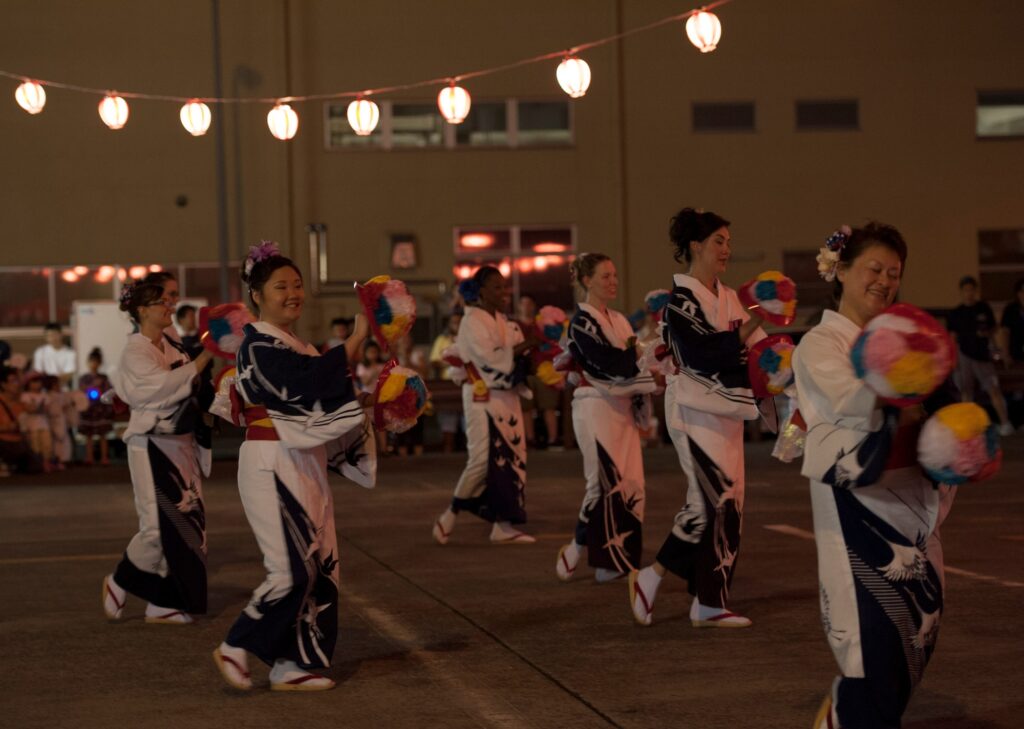
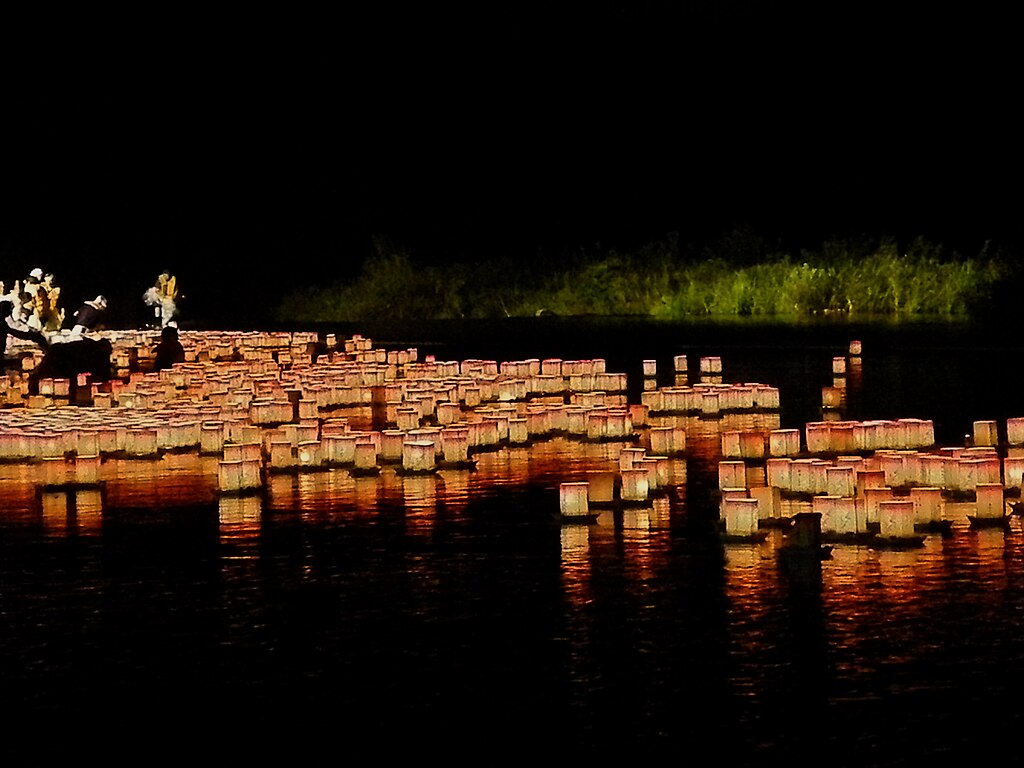
And so ends our limited whirlwind tour of festivals around the world that celebrate harvest and the dead, peculiar not only in their unity of time and subject, but also practice. What similarities did you notice? I noticed strong connections of light/fire, dancing and singing, sharing and offering food, and returning home to visit family. ‘Tis the season for all of these beautiful things.
Bellingham Community
We at Common Threads like to celebrate harvest, gratitude, and our ancestors as well. The spirit of the land encompasses the spirit of the people, and we are deeply indebted to the Lummi, Nooksack, and other Coast Salish peoples, on whose ancestral homeland we are living. It is their knowledge of this place and the living community of plant and animal life (not to mention the mountains, streams, etc) that we draw from in our work to inspire children to be thoughtful, caring, and grateful to the Earth. Whether we are scavenging for leaves with Kindergarteners, building erosion-proof mountains with 2nd graders, measuring soil temperatures with 5th graders, or pondering genetically modified organisms with 8th graders, our mission is to emulate the relationship of reciprocity that indigenous stewards of the Earth have been practicing since time immemorial.
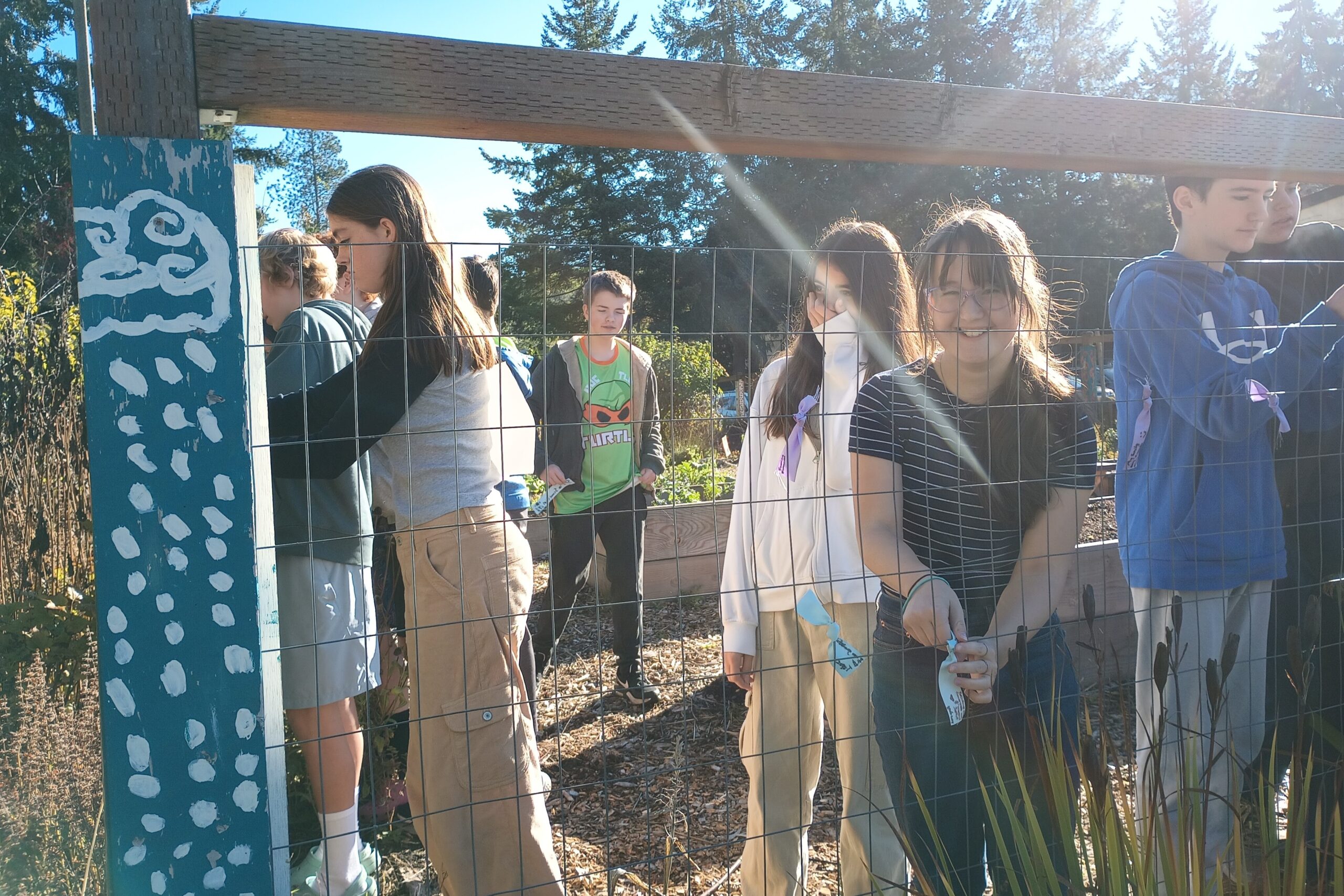
Students at Kulshan Middle School decorate their ‘gratitude wall’

After learning about celebrations of harvest and gratitude from around the world, students added their own thoughts of gratitude to the Kulshan garden
So take a little extra time today – as you walk to your car or sip a warm beverage, look around at how stunning fall is in this place. Notice the air – how does it smell, how does it feel on your cheeks and your arms? Think about the immense current of life that pulses and drives all of the living things that surround us everywhere we go. The trees that line I-5 are just as alive and beautiful as the trees that grow high on forested hills. Endeavor not to become a victim of ghostly mischief. Remember your loved ones that have passed on. Eat their favorite foods with them, sing their favorite songs to them. Take solace and find strength in sources of light, whether they be fires, paper lanterns, or carved turnips. Don’t forget to celebrate your loved ones that are still alive, too. Visit your family and friends! Dance together, sing together. Relax into the interconnectedness of nature, of which your body and mind are a part. As a community, let us cultivate a spirit of remembrance, reciprocity, and gratitude for each other and for the Earth.
In gratitude, solidarity, and spookiness,
– Molly Monahan
Sources:
Dia de los Muertos:
Samhain:
Chuseok:
- https://www.90daykorean.com/chuseok-in-korea/
- https://asia.si.edu/whats-on/events/celebrations/chuseok/
Yam Festivals:
- https://modernfarmer.com/2023/04/west-african-yam-festivals/
- https://www.tastingtable.com/958505/why-the-african-yam-belt-is-crumbling/
- https://www.viviennemackie.com/HolidaysandFestivals/Yam_Festival.html
Obon:
https://www.tsunagujapan.com/japanese-culture-explained-obon/
